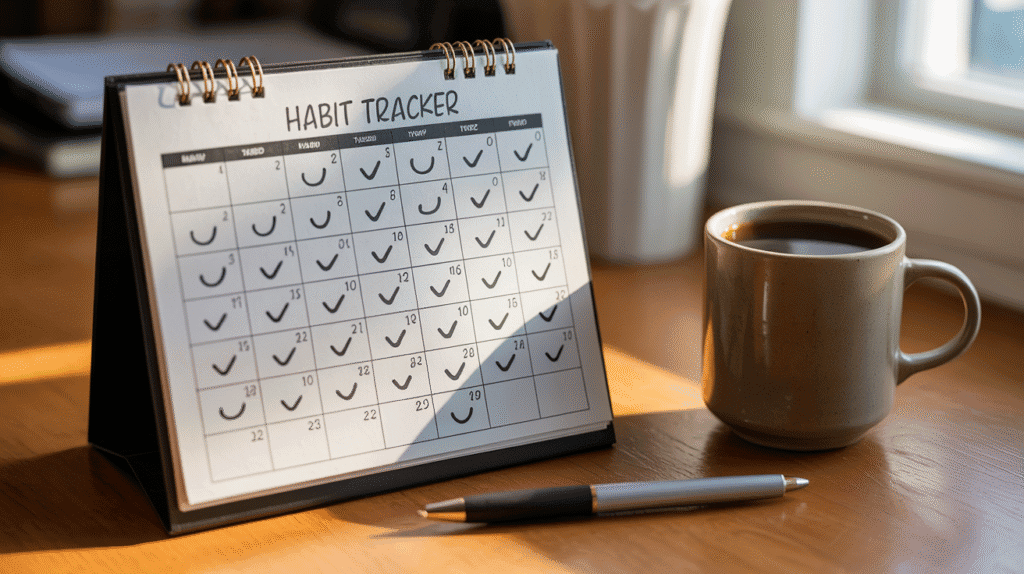
I used to live in cycles. I’d get inspired, commit to a new workout plan, go hard for a few days… and then skip one session. Then another. Soon enough, I was back at square one, frustrated and calling myself lazy.
But I wasn’t lazy. I was following a pattern that nearly everyone falls into: trying to build a big habit with no foundation.
We often think we need motivation to exercise consistently. But what we really need is a structure that can survive low-energy days, shifting schedules, and zero willpower. I didn’t find that in a new fitness program—I found it in one tiny, daily habit.
It was so small it felt almost silly. But it was the first thing that actually stuck. And it’s what helped me stop skipping workouts—not just for a week, but for good.
This article is about that one habit. Why it worked. How I made it stick. And how you can use the same approach to rebuild your consistency, even if your routine has been on-and-off for years.
We love to blame motivation when we skip a workout. “I just didn’t feel like it.” “I wasn’t in the mood.” But motivation is fleeting by nature—it spikes after inspiration, then disappears when life gets busy, stressful, or simply tiring.
The real issue isn’t a lack of motivation. It’s a lack of a system that works even when motivation is gone.
Here’s what most people do wrong:
This creates a fragile habit. It only works on your best days. One missed session leads to guilt. Two lead to quitting. Not because you don’t care—but because the system you built requires perfect conditions to function.
But habits that last aren’t built on pressure—they’re built on ease and repeatability. What you need isn’t more motivation. You need a trigger so small, so frictionless, that showing up becomes automatic.
That’s where my daily workout habit changed—not with intensity, but with accessibility.
The problem isn’t that you can’t push harder. It’s that you’ve never been taught how to start smaller.

At my lowest point of inconsistency, I made a decision: I wouldn’t aim for workouts. I’d aim for one movement. And that movement started with a micro-habit so small it almost felt like cheating.
Every day, no matter what, I would:
That was it. No timer. No reps. No pressure. Just a signal to my brain: We’re in motion now.
And something unexpected happened. On many days, the 2 minutes turned into 10. Sometimes 20. But even when it didn’t—I had still shown up. I was still casting the vote for the identity I wanted: someone who moves daily.
Micro-habits work because they lower the activation barrier. Instead of negotiating with your brain about a full workout, you only ask it to take one simple action. It’s so small, it feels like there’s no reason not to do it.
The science backs it up: consistency, not intensity, is what wires new behavior into your identity. The micro-habit doesn’t just change your schedule—it changes your self-perception.
You don’t need a full workout to become consistent—you just need a reliable way to begin.
A micro-habit is simple—but that doesn’t mean it’s always easy to remember or protect. Life still throws curveballs, and even tiny habits can be forgotten when your mind is busy or your energy is low.
What helped me wasn’t just the habit—it was how I embedded it into my life.
Here’s what made the difference:
And here’s the most important part: I celebrated consistency over intensity. That meant I could be proud of doing “just 2 minutes”—because I didn’t break the chain.
Consistency isn’t about doing a lot—it’s about removing excuses not to do a little.

At first, the 2-minute habit felt like the bare minimum—and it was. But that’s exactly what made it stick. Because I never skipped it, something powerful started to happen: my body began asking for more.
There was no internal fight, no negotiation. The resistance faded, and routine took its place. Eventually, those 2 minutes often turned into full workouts—not because I had to, but because I wanted to.
This is the secret of sustainable habit growth: let consistency lead, and intensity will follow.
Here’s what that natural progression looked like for me:
Not every day expanded—but the base habit never vanished. That’s what mattered.
When small becomes automatic, it removes shame. You don’t feel like you’re “off track” just because life gets chaotic. You have a baseline. And that baseline keeps your identity rooted—even when your energy dips.
The habit starts small not because you lack discipline—but because you’re building trust. And that trust creates momentum.
We often believe that consistency requires willpower, intensity, or a perfect plan. But in truth, the most powerful habits are the smallest ones we don’t break.
The habit that finally helped me stop skipping workouts wasn’t a new gym membership or a strict program—it was putting on my clothes and moving for two minutes. That tiny commitment rewired how I saw myself. From inconsistent… to dependable. From frustrated… to grounded.
And the magic wasn’t in what I did—it was in doing something, every day.
You don’t need to crush every session. You just need a way to show up. And when you lower the barrier, you make room for success to happen more often—and with less resistance.
Start smaller than you think you need to. Stick with it longer than you think matters. And watch it grow into something stronger than motivation: momentum.